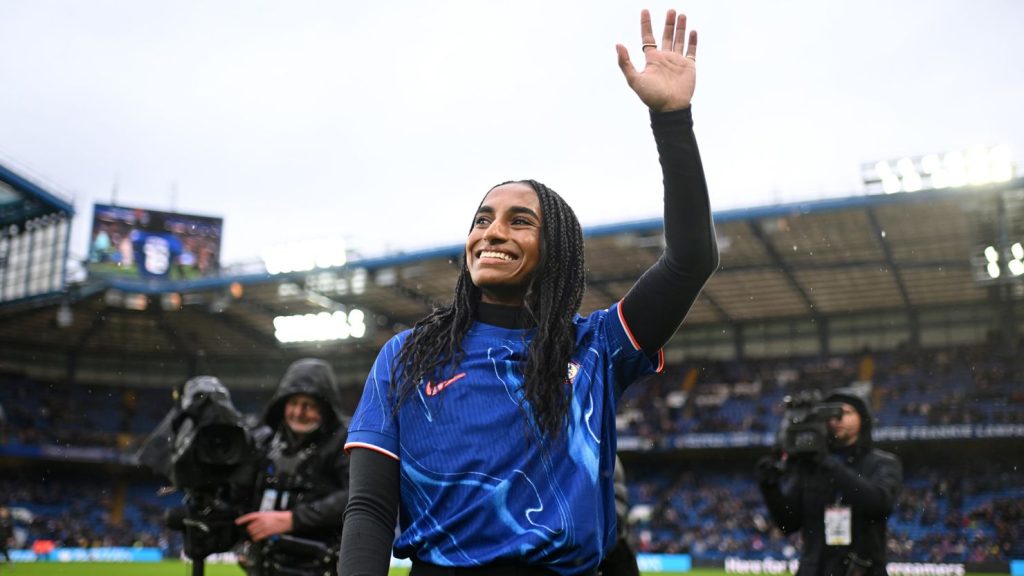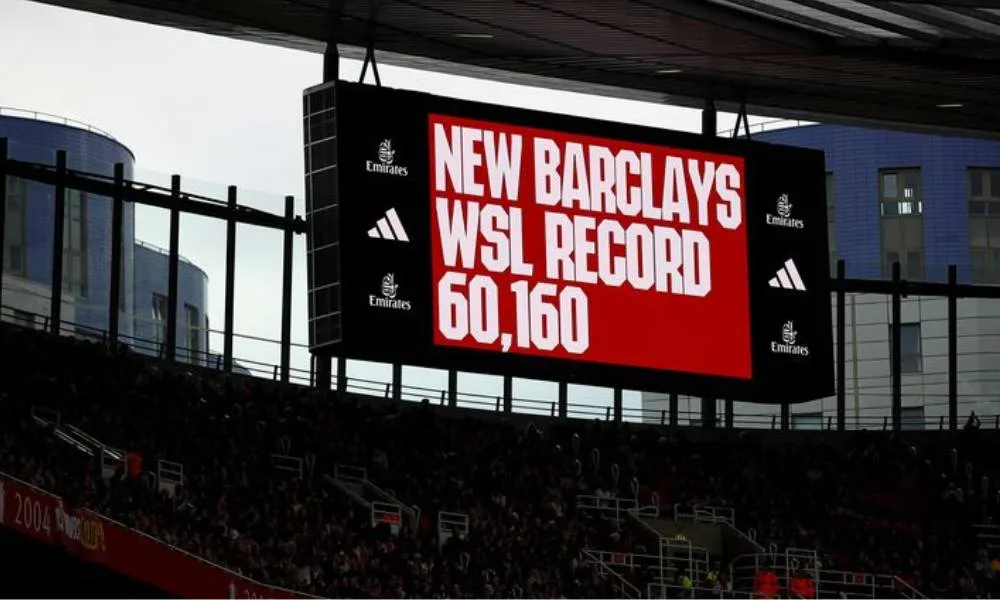
- Chelsea spent £900,000 on defender Naomi Grima
- Big bucks also spent on English midfielder Keira Walsh
How women’s football is growing in England and why spending big is a good thing
If you’re wondering how women’s football is growing in England and why it seems to be growing quicker here than anywhere else, you can point to the big spending of the WSL.
The WSL spending big bucks is a really really positive thing, despite concerns that the gaps between the big teams and the rest of the league will become so big it’ll be damaging.
It is something the league needs to keep an eye on as we don’t want to get 10 years down the line and only a handful of teams are still contenders for the title.
But right now the WSL is still in the earliest stages of development and when clubs like Chelsea WFC sign powerhouse players like Naomi Girma and Keira Walsh it only helps drive attention – which boosts attendance and viewership.
If successful, it could force the hand of other teams … especially Arsenal who have been slacking lately.
WSL clubs have been seeing revenue but when they spend more on player wages – as well as professionaliseing their clubs etc, it leads to profits dropping.
All in all it’s still a really positive sign that women’s football in England is heading in the right direction. Chelsea women’s team are prepared to invest and if Arsenal women’s team, Manchester City’s women’s team and United’s women’s team want to have any chance of closing the gap, they’ll have to loosen the purse strings.
After all, women’s football in England is a start-up. It’s how you should all be thinking of it now. Put the work in and soon you’ll reap the benefits.
What do the bosses think about the spending gap in the WSL?
Women’s Super League bosses have had their say about whether the league is at risk of becoming less competitive.
“They spend [on one player] what we spend on our squad in an entire year,” said Everton boss Brian Sorensen. “So that’s a gap, right? They are number one in this country and they are that for a reason.
“If they have an injury on a good centre-back, they just go out and buy the best one available. Have an injury on a striker last year, and they just go out and buy the best one available.
“That shows commitment to the women’s team, so fair play. But I think if you’re talking about longer term, making it sustainable and all that, then probably it’s going to be hard.”
Leicester boss Amandine Miquel hopes other clubs up their investment.
“Hopefully we still believe somewhere in life that money doesn’t make anything and we have to wake up every day thinking that we can compete against any team and we can continue doing that as long as we can,” she said.
“It’s something we had to live with in France for 12 years with Lyon far ahead, so if that happens it is just going to be an old story for me. When that happens you have to think that second place is the one and that’s it.
“It’s not ideal but it can also maybe give the other clubs intention to try and build the same thing.”

Boost chances of English clubs winning the Champions League
Chelsea’s spending spree also massively increases their chances of winning the Champions League which would only help boost the women’s game in England. It’s been a long old time since an English club won Europe’s biggest competition (Arsenal all the way back in the 2006-07 season).
“I do think it’s about time that an English team won the Champions League. If that happens it grows the game in our country and it benefits everyone.”
– West Ham boss Rehanne Skinner
Is there a salary cap in the WSL? Yes, but it’s soft
Yes, but it’s what you’d call a ‘soft’ cap. The cap is a percentage of a club’s wages, rather than a fixed figure.
WSL clubs can spend 40% of their revenue on players’ wages. This revenue figure includes parent-club income, which means that WSL clubs with larger men’s sides can in theory spend more on players. It has been criticised for widening the gap between WSL clubs’ spending.
In 2022-23, wage bills from the top four revenue-generating clubs in the WSL – Arsenal, Chelsea, Manchester City and Manchester United – accounted for over half of the league’s total wage costs.

1 thought on “How women’s football is growing in England and why spending big is a good thing”